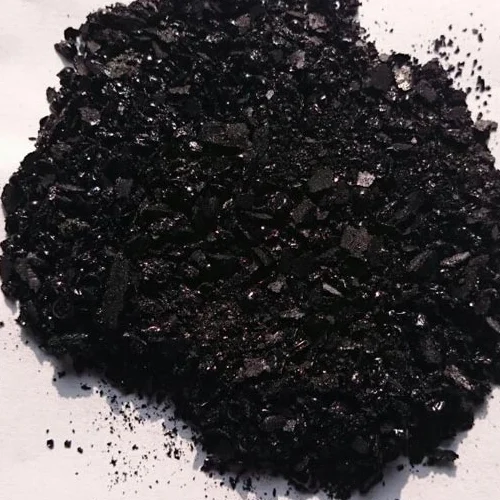Exploring Natural Indigo Dye Sources from Plant-Based Ingredients and Sustainable Practices
The Rise of Plant-Based Indigo Dye A Sustainable Solution for Textiles
In the realm of textile dyeing, indigo has held a special place for centuries. Traditionally derived from the leaves of the indigo plant, this vibrant blue dye has been used for centuries, particularly in the production of denim. However, the resurgence of interest in sustainable practices has led to a renewed focus on plant-based indigo dye. As consumers become increasingly aware of the environmental impact of synthetic dyes, the demand for natural alternatives has soared. This article delves into the benefits, challenges, and future of plant-based indigo dye.
The Origins of Indigo
Indigo dye gains its color from the natural compound indigo, which is found in several plants, notably Indigofera tinctoria. The process of extracting indigo is labor-intensive but rooted in ancient traditions. This natural dye is not only biodegradable but also non-toxic, making it an appealing alternative to synthetic dyes that can contain harmful chemicals. Traditional indigo dyeing techniques often involve fermentation, creating a unique and complex relationship between the artisan and the material.
Environmental Impact
One of the driving forces behind the shift towards plant-based indigo is the growing concern over the environmental impact of conventional dyeing processes. Synthetic dyes are petroleum-based and can have devastating effects on waterways, contributing to pollution and harming aquatic life. In contrast, plant-based indigo is a sustainable choice that can reduce water usage and chemical runoff. Additionally, the cultivation of indigo plants can promote biodiversity and support local economies, providing livelihoods for farmers.
Modern Applications
Today, various brands and artisans are reviving plant-based indigo dyeing techniques, incorporating them into contemporary fashion and home textiles. Innovative brands prioritize sustainability, using organic cotton and other natural fibers in their products. This movement not only celebrates the rich heritage of indigo dyeing but also appeals to eco-conscious consumers who value transparency and ethical sourcing in their purchases.
plant based indigo dye

Moreover, the versatility of indigo dye allows for many creative applications. From traditional shibori techniques to modern tie-dye patterns, the scope for artistic expression is vast. Designers are experimenting with different binding and resist techniques, creating unique, one-of-a-kind pieces that highlight the beauty of natural dyeing.
Challenges in Adoption
Despite its benefits, the revival of plant-based indigo dyeing is not without challenges. The production of indigo can be labor-intensive and requires specific climatic conditions for optimal growth. This reliance on natural factors can lead to fluctuations in supply, making it difficult for manufacturers to meet increasing demand consistently. Additionally, there is a need for education around traditional dyeing processes, as many artisans are moving away from these practices in favor of faster, less sustainable methods.
Furthermore, while the market for sustainable textiles is growing, it is still a niche segment compared to the larger fashion industry. Raising awareness among consumers about the benefits of plant-based indigo and the importance of sustainable practices is vital for the ongoing success of this movement.
The Future of Plant-Based Indigo Dye
Looking ahead, the future of plant-based indigo dye appears promising. As sustainability becomes a focal point within the fashion industry, both brands and consumers are seeking alternatives to traditional dyeing methods. Innovations in cultivation, dye extraction, and production techniques will likely make plant-based indigo more accessible. Collaborative efforts between farmers, artisans, and brands can help strengthen supply chains, ensuring that plant-based indigo becomes a viable option for mass production.
In conclusion, plant-based indigo dye represents a beautiful convergence of history, artistry, and sustainability. By supporting traditional practices and fostering a greater appreciation for natural textiles, we can help preserve cultural heritage while promoting a more sustainable future. As we increasingly seek sustainable solutions in our everyday lives, embracing plant-based indigo may be one of the steps we can take toward preserving our planet for future generations.
-
The Timeless Art of Denim Indigo Dye
NewsJul.01,2025
-
The Rise of Sulfur Dyed Denim
NewsJul.01,2025
-
The Rich Revival of the Best Indigo Dye
NewsJul.01,2025
-
The Enduring Strength of Sulphur Black
NewsJul.01,2025
-
The Ancient Art of Chinese Indigo Dye
NewsJul.01,2025
-
Industry Power of Indigo
NewsJul.01,2025
-
Black Sulfur is Leading the Next Wave
NewsJul.01,2025

Sulphur Black
1.Name: sulphur black; Sulfur Black; Sulphur Black 1;
2.Structure formula:
3.Molecule formula: C6H4N2O5
4.CAS No.: 1326-82-5
5.HS code: 32041911
6.Product specification:Appearance:black phosphorus flakes; black liquid

Bromo Indigo; Vat Bromo-Indigo; C.I.Vat Blue 5
1.Name: Bromo indigo; Vat bromo-indigo; C.I.Vat blue 5;
2.Structure formula:
3.Molecule formula: C16H6Br4N2O2
4.CAS No.: 2475-31-2
5.HS code: 3204151000 6.Major usage and instruction: Be mainly used to dye cotton fabrics.

Indigo Blue Vat Blue
1.Name: indigo blue,vat blue 1,
2.Structure formula:
3.Molecule formula: C16H10N2O2
4.. CAS No.: 482-89-3
5.Molecule weight: 262.62
6.HS code: 3204151000
7.Major usage and instruction: Be mainly used to dye cotton fabrics.

